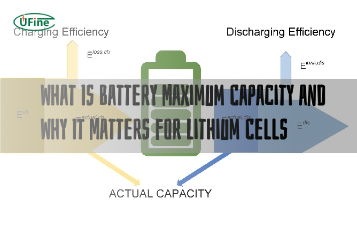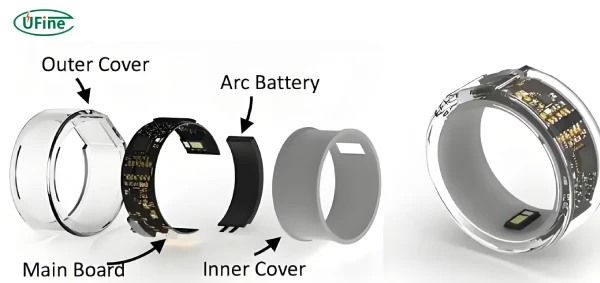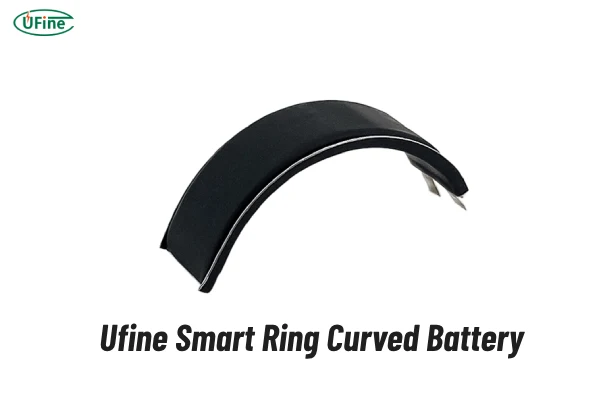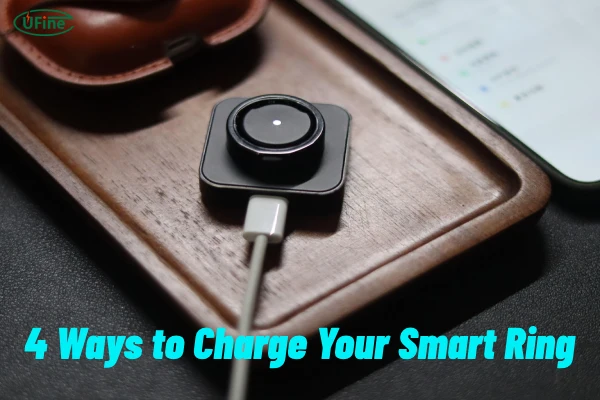Smart rings are small but mighty pieces of technology. From tracking health metrics to enabling contactless payments, these rings seamlessly fit into our lives. But for all the impressive features packed into such a tiny device, one crucial aspect determines their daily usability: battery life. How do you charge a smart ring? What types of batteries do they use? And how can you maximize your ring’s lifespan with the proper charging techniques?
In this guide, we’ll explore everything you need to know about charging your smart ring, from understanding the specific battery type it uses to learning practical tips for checking the battery level. Let’s dive in to keep your ring running at peak performance.
Part 1. What kind of battery does a smart ring use?
Smart rings utilize various types of small rechargeable batteries, each chosen for its unique qualities suited to the compact, wearable design. Here’s an in-depth look at the primary battery types used in smart rings and their distinct characteristics:
-
Lithium-Ion Batteries:
By far the most common type in consumer electronics, lithium-ion (Li-ion) batteries have become the standard for most smart rings. Known for their high energy density, they pack a lot of power into a small size, allowing rings to operate for several days on a single charge. Lithium-ion batteries are also efficient, offering fast-charging capabilities that reduce the time needed to power up. However, they gradually degrade over time, typically losing capacity after 300 to 500 charge cycles. Despite this, they remain an excellent choice for users who need reliable, daily charging for their smart rings. -
Lithium-Polymer Batteries:
Lithium-polymer (LiPo) batteries offer similar energy density to lithium-ion batteries but with a distinct advantage: they are more flexible in shape and size. This adaptability allows manufacturers to design slim and contoured batteries that fit precisely into varying ring designs. Lithium-polymer batteries are also less prone to leakage, adding an extra layer of safety, especially in compact wearable devices. However, they tend to be slightly more expensive than lithium-ion options and, while durable, also lose capacity over time. -
Silver Oxide Batteries:
Although rare in rechargeable smart rings, silver oxide batteries are sometimes used in ultra-compact rings where size is a higher priority than rechargeability. These batteries are disposable, meaning they must be replaced once depleted. Their small form factor and stable output make them suitable for simpler smart rings with minimal power demands. However, they lack the convenience of rechargeable batteries, which limits their practicality for regular or advanced users. -
Solid-State Batteries:
This emerging technology is less common but gaining traction for its enhanced durability, compactness, and energy density. Solid-state batteries use a solid electrolyte rather than a liquid, making them safer and more robust under different conditions. Though currently more costly to produce, they’re expected to become more prevalent as technology evolves, providing even longer battery life and safety for high-performance smart rings.
Ufine Battery is a professional company that develops, produces and sells lithium batteries. It provides curved smart ring batteries to many customers around the world. The size, capacity and voltage of lithium batteries can be customized according to the needs. Contact us now for more information.
Part 2. 4 Ways to charge your smart ring
Charging a smart ring involves different methods depending on the battery type, device design, and intended usage. Let’s go over the main charging methods and their unique benefits and considerations:
-
Wireless Charging:
Wireless charging has become the go-to method for many smart rings. To charge, simply place the ring on a compatible wireless charging pad. Through inductive charging, power transfers without needing a physical plug, making it incredibly convenient. However, wireless charging may take a bit longer than other methods due to the efficiency of power transfer through induction. While convenient, ensure your ring is perfectly aligned on the pad for the best results, as misalignment can reduce charging efficiency and time. -
Magnetic Charging:
Magnetic chargers work by creating a secure connection between the ring and the charging cable or station. Magnets align the ring’s charging contacts with the charger’s contacts, ensuring a steady power transfer and minimizing the chances of accidental disconnection. This method is typically faster than wireless charging and is often used for rings with higher power demands. If your ring offers this method, it’s likely to charge fully in about an hour, providing a reliable and effective way to power up without excessive time on the charger. -
Contact Charging:
Some rings use small metal contacts that connect to a charger directly, creating a physical pathway for power transfer. This method can provide a rapid charge and is stable, as long as the contacts are kept clean and corrosion-free. However, the physical contacts can wear down over time, and users need to ensure the charger aligns precisely with the ring each time, which may add a minor inconvenience. -
Solar Charging:
Although not common in most smart rings, a few models incorporate solar charging capabilities. Designed for outdoor enthusiasts or users looking for eco-friendly options, these rings can recharge when exposed to sunlight. While solar charging can be a fantastic secondary method, it often can’t fully replace traditional charging for rings with heavy usage. Solar charging also requires consistent sunlight exposure to be effective, which can vary based on geographic location and weather.
The right charging method depends on your lifestyle and your smart ring’s capabilities. Each method has pros and cons, so consider how you use your ring daily to choose the most efficient charging option.
Battery State of Charge and Battery State of Health
Learn About Lithium Battery Charging
Part 3. Types of smart ring battery charger
Selecting the right charger is essential to maintain your smart ring’s battery life and performance. Here are the typical charger types available for smart rings:
-
Wireless Charging Pads:
Designed for rings that support wireless charging, these pads allow you to simply place the ring on the surface and let it charge. Wireless pads are easy to use and often compatible with multiple devices, making them a versatile option for users with other wireless-charging gadgets. -
Magnetic Chargers:
Magnetic chargers are designed to attach directly to the ring with a secure magnetic lock, which improves both charging speed and efficiency. They’re compact, easy to travel with, and ensure a solid connection each time. Many magnetic chargers are also USB-compatible, allowing users to charge their ring through laptops, power banks, or wall adapters. -
Multi-Device Charging Stations:
Multi-device stations are excellent if you have multiple wearables or small electronics to charge. They’re equipped with different charging ports, allowing you to power multiple devices simultaneously. Some stations include dedicated magnetic or wireless charging sections for smart rings, making them perfect for organizing and powering all your devices in one place.
Using the charger recommended by your smart ring’s manufacturer is best. This ensures compatibility and prevents potential damage to your battery.
Part 4. How long does a smart ring battery need to be charged?
Charging time varies based on the battery type, charger, and charging method. Below are some typical time frames:
-
Wireless Charging: Charging with a wireless pad may take approximately 1 to 2 hours. This can vary depending on the battery’s capacity and the pad’s power output.
-
Magnetic Charging: Magnetic charging usually completes within an hour, offering a faster alternative to wireless pads.
-
Solar Charging: Solar charging can be inconsistent, often taking several hours of direct sunlight to provide just a partial charge. Full recharges are difficult through solar alone, making it a good backup rather than a primary charging solution.
Part 5. How long does a smart ring battery last?
Smart ring battery life varies widely based on the ring’s features and battery capacity. Here are some general expectations:
-
Lithium-Ion and Lithium-Polymer Batteries: On average, these batteries provide 1 to 7 days of usage per charge. High-end rings with advanced features like GPS or continuous health monitoring may drain faster, while simpler rings last longer.
-
Silver Oxide Batteries: For rings using non-rechargeable silver oxide batteries, lifespan can extend several months before replacement is necessary.
-
Solid-State Batteries: When adopted more widely, solid-state batteries may offer even longer use periods due to their increased efficiency and durability.
Part 6. How to check the battery level?
Checking your battery level regularly helps avoid inconvenient downtime. Here are common methods for monitoring battery levels:
-
App Integration: Most smart rings connect to an app on your phone. This app provides real-time battery level information and often sends notifications when the battery is low or fully charged.
-
LED Indicators: Some rings have a small LED light that changes color to signal battery levels, like green for full, yellow for medium, and red for low. It’s a simple but effective way to keep an eye on your battery.
-
Haptic Feedback: Some rings offer haptic (vibration) alerts when the battery is critically low, prompting you to charge the device soon.
Part 7. Final words
Knowing how to charge, monitor, and maintain your smart ring battery can significantly impact your device’s functionality and lifespan. With the right charger, mindful charging habits, and regular battery checks, you can keep your smart ring ready for any task. Whether you use it to track health, access information, or make payments, a well-maintained battery ensures your smart ring supports
Related Tags:
More Articles

What Is Battery Maximum Capacity and Why It Matters for Lithium Cells
Battery maximum capacity defines how much energy a lithium cell can store and deliver reliably, key to EVs, storage units, and industrial use.
Commercial Battery Comparison: Lithium vs. Lead‑Acid vs. VRLA
Choosing lithium, lead-acid, or VRLA? This guide compares cost, performance, and safety to help businesses pick the right commercial battery.
Best Camping Light Battery Guide for Long-Lasting Outdoor Adventures
Explore top battery types for camping lights, how to choose them, and tips to maximize runtime on every outdoor adventure.
The Ultimate Guide to GPS Tracker Batteries
Wondering how long a GPS tracker battery lasts? Learn how to extend its life, spot a dying battery, and when to replace it. Get expert power-saving tips now!
How to Choose the Best Battery for Your Sander Tool?
Discover how to choose the perfect sander battery. Learn about types, voltage, runtime, and custom solutions to power your sander tool more efficiently.






